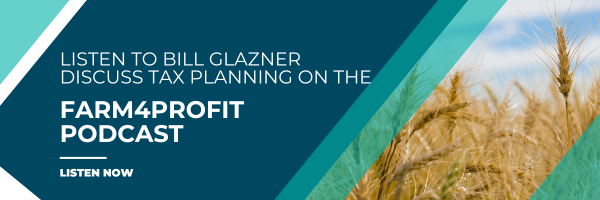Opportunities for Farmers in an Environment of High-Interest Rates & Low Tax Brackets
Smart Financial Strategies for Farmers Amid Economic Shifts
As farmers and business owners in the agriculture industry, the current financial landscape presents unique challenges and opportunities. With interest rates climbing and tax brackets becoming more favorable, it’s time to navigate these waters with strategic acumen.
Understanding the Current Economic Climate
The rise in interest rates is a response to broader economic trends, often influenced by inflation and monetary policy. While this might initially seem daunting, especially when considering loans and financing, there’s a silver lining. Higher interest rates can lead to better returns on savings and investments, which is crucial for your cash reserves.
On the flip side, the current low tax brackets present a favorable scenario. Lower taxes mean more money in your pocket, which can be reinvested into your business. It’s an opportune time to reevaluate your financial strategies and maximize these tax benefits.
Strategies to Capitalize on High-Interest Rates
- Revisiting Savings & Investments
With interest rates climbing, revisit your savings accounts and fixed-income investments, such as United States Treasury Bills as they now offer more attractive returns. This approach can help you build a stronger financial buffer.
- Smart Borrowing Decisions
While borrowing costs are higher, it’s essential to make judicious decisions about loans. Prioritize high-interest debt repayment and explore refinancing options for existing loans. This can help reduce the financial strain in the long run.
Maximizing Benefits from Low Tax Bracket
Consider converting more of your unsold inventories to cash to help reduce your business debt that is at higher interest rates, while at the same time, incurring possible historically low interest rates. We are in a pivotal time where recognition of income and incurring tax, while reducing debt, may actually create positive cash flow over the next couple of years. Other tax strategies should also be considered that allow you to convert more of your unsold inventory to cash, even without the taxation to help control your high interest debt with minimal taxation.
Work with a CPA to optimize your tax situation and cash flow plan. Explore tax credits and deductions specific to agriculture. Effective tax planning can lead to significant savings, which can be reinvested into your business.
Example
| Assumptions | Balance | Rate | |
| Line of Credit | 500,000 | 9% | |
| Taxable income | 250,000 | 15% | |
| Year One | No Tax | With Tax | |
| Taxable Income | – | 250,000.00 | |
| Tax | – | 37,500.00 | |
| Line of Credit | 500,000.00 | 250,000.00 | |
| Annual Interest | 45,000.00 | 22,500.00 | |
| Total of Tax and Interest Expense – Year One | 45,000.00 | 60,000.00 | |
| Year Two | |||
| Taxable Income | – | 250,000.00 | |
| Tax | – | 37,500.00 | |
| Line of Credit | 750,000.00 | – | |
| Annual Interest | 67,500.00 | – | |
| Total of Tax and Interest Expense – Year Two | 67,500.00 | 37,500.00 | |
| Total Tax & Interest Expense Combined Over Two Years: | 112,500.00 | 97,500.00 | |
| Potential Savings by Paying Tax Over a Two Year Period | 15,000.00 | ||
The pressure of managing a farm business in a fluctuating economic environment can be overwhelming.
It’s about finding the right approach and making informed decisions that align with your long-term business goals. Contact an Adams Brown advisor to learn more about how you can take advantage of the current economic environment.


